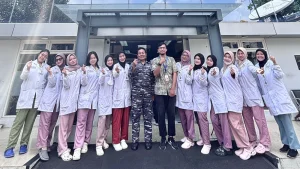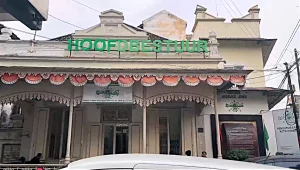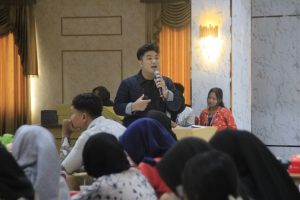VOKASI NEWS – Hobi Kere blog from Indonesian to English reveals a translation process that combines semantic and communicative methods along with linguistic strategies.
Digital material knows no borders in today’s hyperconnected world, especially when it comes to niche hobbies like collecting diecast cars. Because of this worldwide trend, local media channels have started to use translation to reach new audiences who don’t speak their native language. Muhamad Alifta Rafif’s final report goes into detail about one of these projects. It looks at the translation processes and strategies utilized to turn the Indonesian Hobi Kere diecast blog into English.
Hobi Kere is a well-known website that reviews diecast models and talks about anything from collector culture to new product releases. At first, it was only for Indonesian audiences, but its growth into English-speaking regions shows both ambition and a desire to share cultures. The study made it clear that this change wasn’t just about changing the language; it was a translation process that entailed changing the tone, context, and terminology to keep the meaning and make it interesting to readers throughout the world.
Translation Methods in Diecast Blog
The study used Peter Newmark’s translation methods and Vinay & Darbelnet’s translation strategies as its frameworks. The writer found two main methods—semantic and communicative translation—by closely looking at four example articles from Hobi Kere. Semantic translation tries to keep the structure and meaning of the source text as close as possible, while communicative translation tries to make the target language clear and fluent, even if that means changing the form or style.
For instance, when talking about Larry Chen, an automotive photographer, the translator didn’t precisely translate “dunia budaya mobil” as “the world of car culture.” Instead, it changed to “the scene of car cultures,” which sounds more natural and casual to English speakers. This is a perfect example of communicative translation in action. It keeps the original message’s spirit while making it more accessible to a wider audience.
Vinay and Darbelnet’s strategies were just as important. To fill in the gaps between languages and cultures, they used techniques like transposition (changing the way sentences are structured), modulation (changing the point of view), and borrowing (keeping words from the source language, such “kebaya” or “Hot Wheels”). These methods made sure that the translation was not just correct from a technical point of view, but also culturally sensitive and interesting.
The report also talked about how important it is to localize. The articles that were translated were written with the understanding that readers from other countries would not know Indonesian idioms or the subtleties of the diecast community. So, a lot of cultural allusions were either clarified, changed, or replaced with English phrases that mean the same thing. All of this was done while keeping the welcoming and informative tone that is characteristic of HobiKere.
Translation is More Than Language
In the end, the initiative shows that translation is more than just a way to learn a language; it’s also a way to connect with people throughout the world and promote cultural diplomacy. Hobi Kere shows how a passion for a niche activity like diecast collecting can cross borders, bring people together, and help them understand each other better by making its material more accessible to people around the world.
In a time when digital content connects people all over the world, carefully translating niche content is not only helpful; it’s necessary. Hobi Kere’s journey into English-speaking spaces shows that translation can bring people together, make them feel included, and help them understand and appreciate other cultures.
BACA JUGA: [Pengalaman Sidang Tugas Akhir: Antara Ketakutan dan Kelegaan]
***
Penulis: Muhamad Alifta Rafif
Editor: Oky Sapto Mugi Saputri






